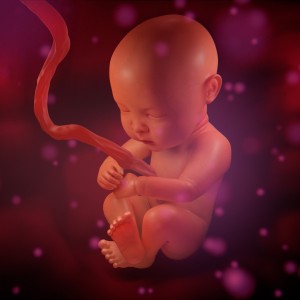By A. O.

The fact that the Qur’an describes such detailed information about the testes, where the sperm are produced, is further proof that it was revealed by God, the Creator of all.
“Man has only to look at what he was created from. He was created from a spurting fluid, emerging from between the backbone and the breast-bone.” (Al-Tariq, 5-7)
Significant details emerge when we look at the information in the Qur’an concerning human creation; the term ‘spurting fluid’ in Surat at-Tariq refers to semen. The above verses describe the preliminary location of the testes in the embryo, and their embryological origin in detail, with perfect accuracy.
As the baby develops in the mother’s womb, the testes develop in the same place as the kidneys, between the backbone and the ribs. This area is known as the lumbar region. The testes develop from the ventromedial (front, central) part of the tissue known as the mesonephros (middle kidney). (The ovaries also derive from the same tissue.)
Once the testes have developed in this region they move downward inside the abdominal cavity as of the third month of pregnancy. As a result of this journey through the abdomen, they find themselves descended into the testicular sac known as the scrotum. This passage is generally completed by birth, or soon after. This embryological fact is known in the literature as the ‘descent of the testes’.
These facts from the science of embryology are exactly described in the following verses:
“Man has only to look at what he was created from. He was created from a spurting fluid, emerging from between the backbone and the breast-bone.” (Al-Tariq, 5-7)
Just as the verses reveal in the words “beyni (between) essulbi (the back-bone) wa etteraibi (and the breast bone ….)”, the testes depart from the region between the backbone and the ribs during the development of the baby and ultimately descend down to the testicular sac.
The fact that the Qur’an describes such detailed information about the testes, where the sperm are produced, is further proof that it was revealed by God, the Creator of all.
————
A. O. is a Turkish writer and author.
Soucre Link
